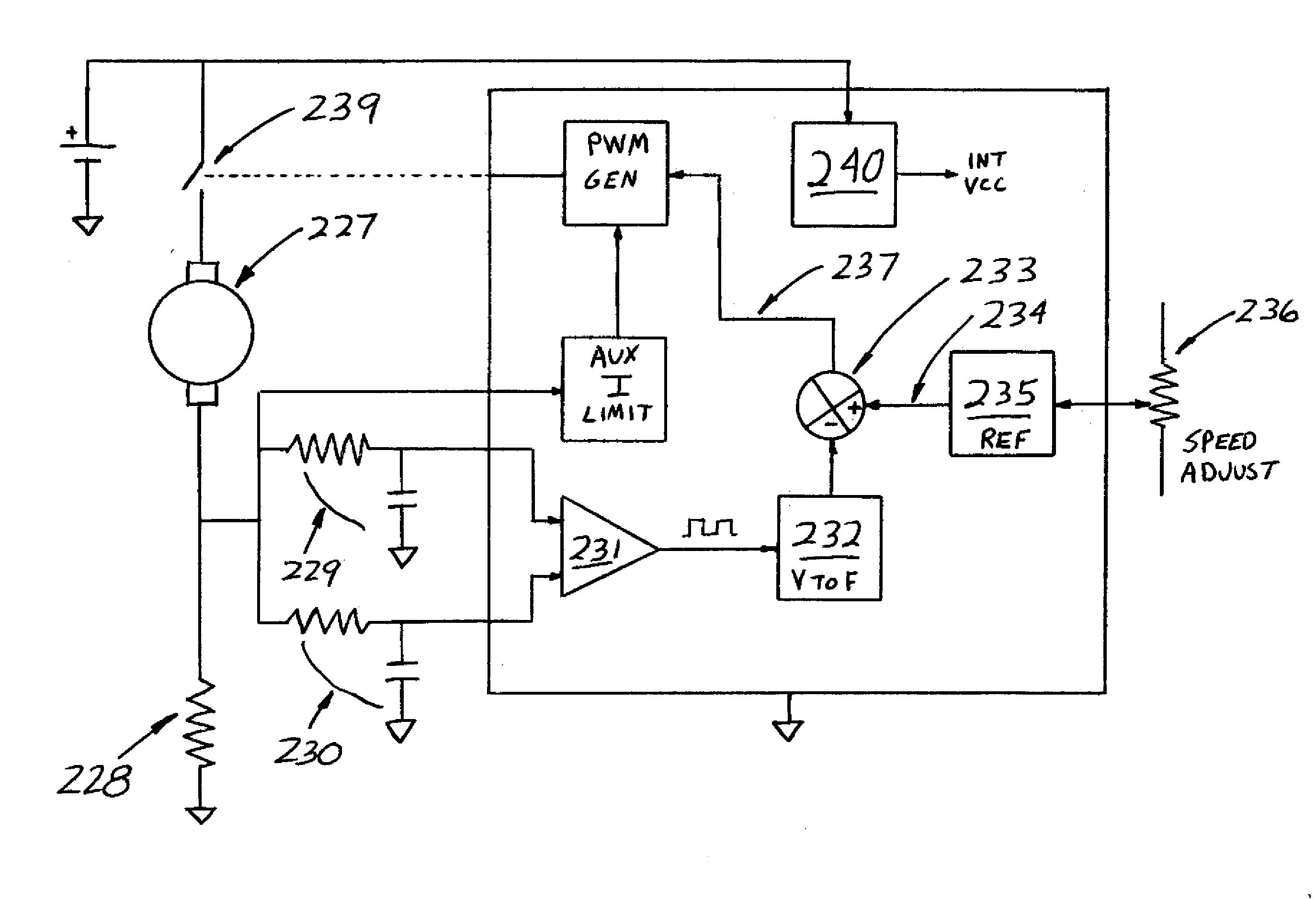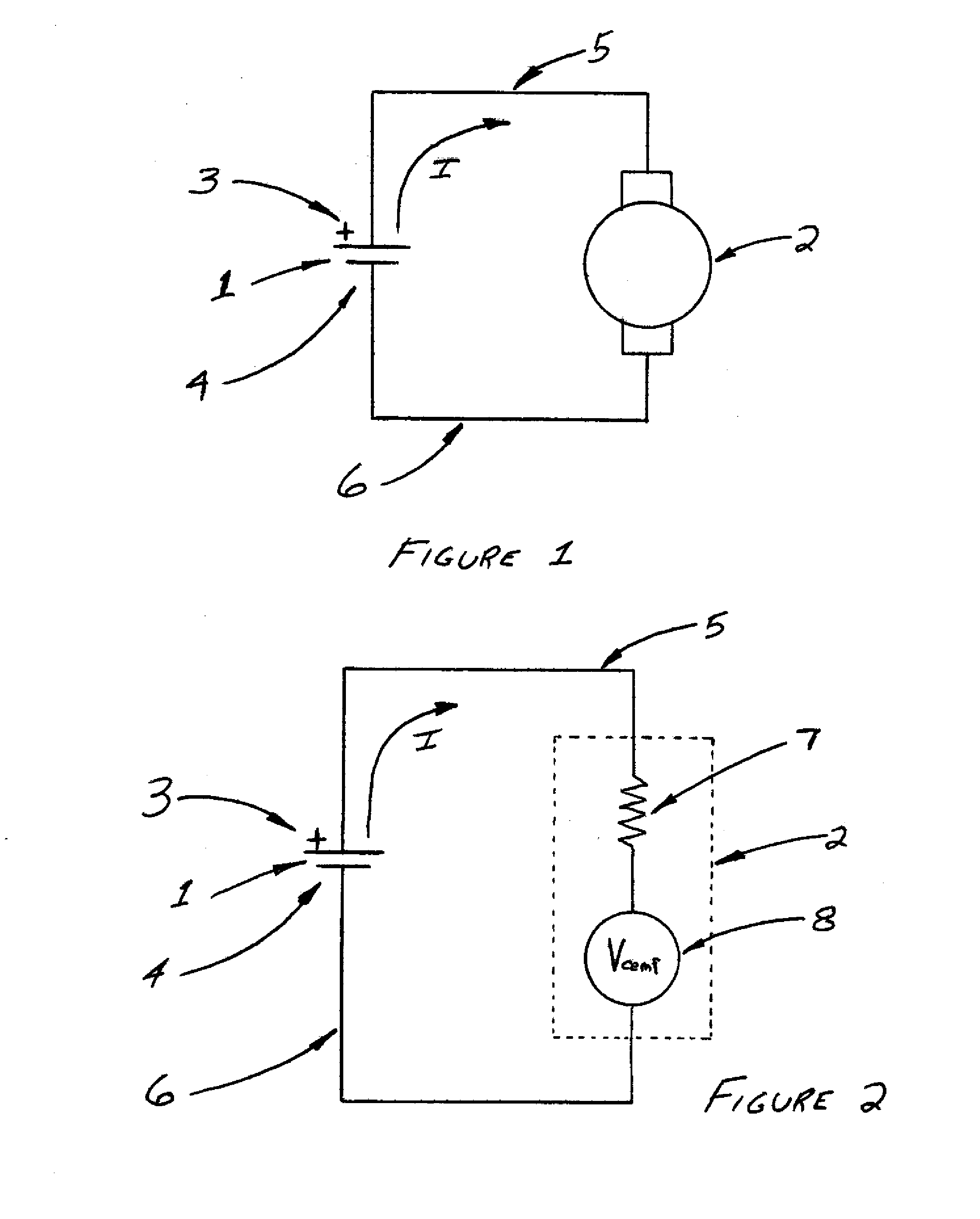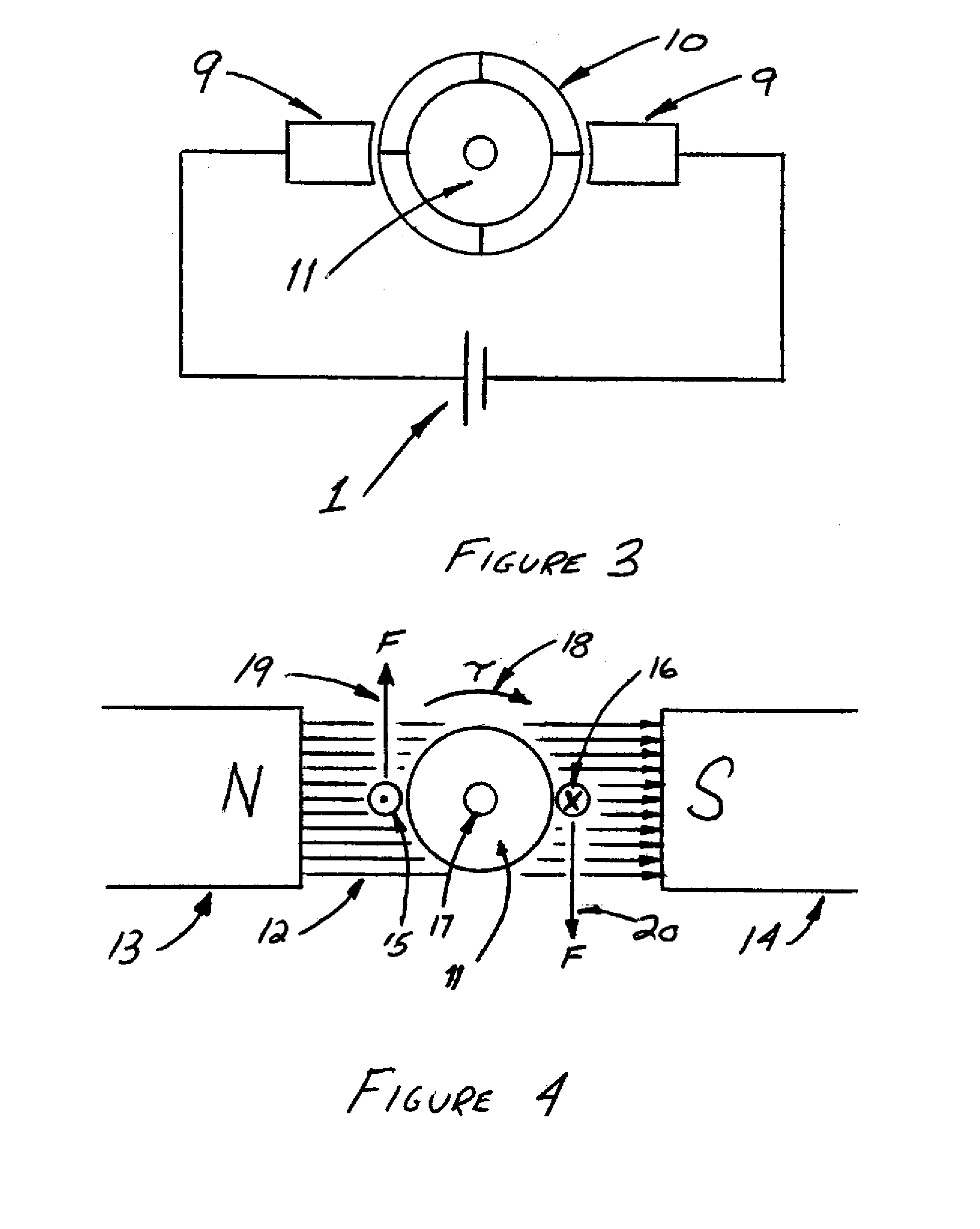Method of Sensing Speed of Electric Motors and Generators
a technology of electric motors and speed sensing, which is applied in the direction of motor/generator/converter stoppers, dynamo-electric converter control, instruments, etc., can solve the problems of significant cost increase for the motor assembly, inability to measure the speed of small dc motors, and inability to use small dc motors. to achieve the effect of cost saving and simple and inexpensive circui
- Summary
- Abstract
- Description
- Claims
- Application Information
AI Technical Summary
Benefits of technology
Problems solved by technology
Method used
Image
Examples
Embodiment Construction
[0411]FIG. 1 shows a simplified schematic of a battery (1) powering a DC motor (2). The schematic most accurately portrays a permanent-magnet DC motor, which has rotor windings but no stator windings. However, the motor symbol shown in this schematic may also be used to generically represent any type of DC motor, including the many types that have both rotor windings and stator windings. The motor symbol in FIG. 1 is used in this generic sense in most of the figures contained within this document.
[0412]In FIG. 1 and in other figures contained herein, a single-cell battery (1) is shown as the power source for the motor (2). As per common convention, this single-cell battery symbol is used to generically represent batteries of any number of cells or voltage, and also any DC voltage source. Further, within this document, this battery symbol is used to generically represent any DC or AC power source that may be used to power a motor.
[0413]In the simplified schematic shown in FIG. 1, the...
PUM
 Login to View More
Login to View More Abstract
Description
Claims
Application Information
 Login to View More
Login to View More - R&D
- Intellectual Property
- Life Sciences
- Materials
- Tech Scout
- Unparalleled Data Quality
- Higher Quality Content
- 60% Fewer Hallucinations
Browse by: Latest US Patents, China's latest patents, Technical Efficacy Thesaurus, Application Domain, Technology Topic, Popular Technical Reports.
© 2025 PatSnap. All rights reserved.Legal|Privacy policy|Modern Slavery Act Transparency Statement|Sitemap|About US| Contact US: help@patsnap.com



